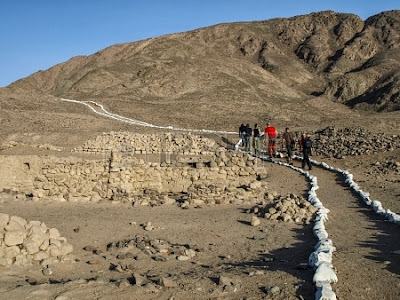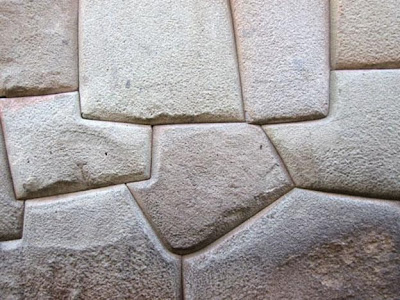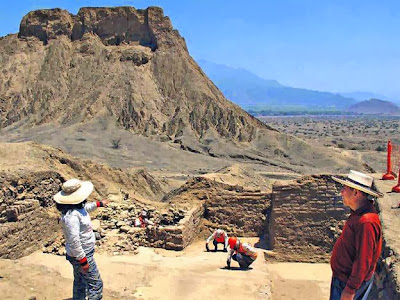The threat of a government shutdown and credit default repugicans promise are not about spending, debt and deficit, or even
the ACA; it is about ending the…
America’s government is far from perfect, but it worked relatively
well until 2009 when repugicans’ raison d’être became neutering the
legally elected government at all costs to punish the electorate for
choosing an African American man as President. Throughout the
President’s tenure, repugicans fabricated one phony debt crisis after
another to cripple the government’s ability to operate and keep the
economy stagnating regardless the damage to the people. In fact, it is
safe to say obstructing governance has been the repugicans’ only goal for four straight years.
Now that the government is due to run out of operating funds and hit
its debt limit, repugicans have created another crisis over funding the
government, paying the nation’s debt, and a three year-old health law
they claim is an existential threat to the nation. However, the looming
threat of a government shutdown and credit default repugicans promise
are not about spending, debt and deficit, or even the Affordable Care
Act; it is about ending the nation’s representative democracy and
ushering in fascism and rule by oligarchy.
After the 2008 election repugicans acted as if they won control of
Congress and the White House, and attempted to thwart President Obama
and Democrats attempt to govern the nation. They have persisted in that
vein throughout the President’s tenure and it drove credit rating agency
S&P to downgrade America’s credit because “
repugican political
brinkmanship had shown evidence of America’s governance and policymaking
becoming less stable, less effective, and less predictable.” When repugicans revealed their
ransom demands
to raise the debt ceiling on Wednesday, they exposed their disregard
for democracy and revealed their only goal is fundamentally transforming
the way America is governed; even if they have to decimate the economy
to achieve their goal.
It is obvious that repugicans reject the results of the last
election or they would not threaten to rule by destroying the nation’s
economy. Americans should not underestimate the repugicans’ threat
because there is just enough support for a default that analysts
including Chris Krueger from Guggenheim Partners,
warned on Wednesday that “
there is a 40% chance of a credit default scenario as a result of the looming fight over raising the debt ceiling.” Krueger did not inspire confidence that repugicans will pull back their threat because he continued that “
the
path forward on the debt ceiling remains a total mystery and our 60%
probability that the U.S. will not enter into default is based on
nothing more than blind faith.” Krueger’s blind faith aside, there are an overwhelming number
of repugican and teabag voters supporting a default, and enough
congressional repugicans willing to vote against raising the debt limit
that the 40% figure is a serious threat to the nation’s economy.
Crashing the economy may seem risky for demanding enactment of their
agenda, but repugicans are intent on satisfying their wealth donors’
vision for America.
The repugican list of demands for raising the debt ceiling has
nothing to do with the nation’s debt, and everything to do with
implementing every single repugican legislative proposal for the past
two years and the rnc platform voters rejected last November. Whether it
is eliminating the EPA’s regulatory oversight, “repealing Obamacare,”
eliminating the financial reform law, tax reform according to the Ryan
budget, raiding federal employee’s pensions, or approving the Keystone
XL pipeline, the ransom demands are a reiteration of Willard Romney’s
first day to-do list had he won the presidency. The ransom demands
represent the nation’s agenda if repugicans ran the government, but
since they are not in charge they have made blowing up the economy a “
valid legislative strategy” to rule unchallenged and contrary to the will of the voters.
What Americans are witnessing from repugicans and Koch teabagger
extremists is an attempted bloodless (for now) coup d’état with the full
faith and credit of the United States the price to pay for adhering to
the Constitution’s mandate for running the government. The repugicans are
mesmerized by nihilists in the extremist wingnut movement who
believe that America’s form of government, and its Constitution, are
worthless and so detestable that they have to be destroyed to give
wealthy oligarchs power to dictate which laws are enacted according to
their fascist vision. Boehner said as much a couple of months ago when
he told an interviewer that repugicans primary goal is repealing laws
their corporate donors oppose, and the list of ransom demands represent
policies Wall Street and the Koch fascists lust for in their “
fundamentally transformed” vision of America.
The Koch brothers, ALEC, and libertarian wing of the cabal have long
plotted to dismantle the government departments they regard as standing
in their way of controlling the course of the nation, and they found
willing assistance from ignorant racists in the teabagger movement to
support the fascist takeover. In 1944, Henry A. Wallace defined an
American fascist as one who puts money and power ahead of human beings
and uses demagogues and stooges as fronts for the power behind the
scenes. In 2013, stooges and demagogues are the likes of Sarah Palin,
Ted Cruz, and Mike Lee who are fronts for Wall Street and the Koch
brothers who are calling the shots behind the scenes.
The repugicans, Wall Street, and the Koch brothers lost the last two
Presidential elections, and for the President’s first term they behaved
like petulant little brats who took their basketball and stopped the
game because they were losing. Now, repugicans and their wealthy
backers are willing to puncture the ball, blow up the basketball court,
and gun down innocent bystanders on their way home to pout if they lose
the debt limit game. It is not governance; it is a group of angry losers
willing to destroy the nation’s economy because the other side won the
last election and the voters retained the President who demands the
nation be governed according to the Constitution and not the libertarian
vision of a transformed America controlled by a fascist regime.
The current debt limit and funding crisis are about subverting democracy and ushering in fascism under cover of “
protecting Americans from Obamacare” and “
reforming successful government programs,”
and have nothing to do with governing according to the Constitution. the repugicans, or the Koch brothers, are not running the government, but
one would not know it based on their threat to enact their platform or
cause a devastating credit default. America has functioned as a
representative democracy for 226 years, but repugicans refuse to accept
the voters will and appear ready to crash the economy unless their
party platform is enacted under duress. President Obama said, “
If we
continue to set a precedent in which a president — a Democratic president — where the opposing party
controls the House of Representatives, if that president is in a
situation in which each time the United States is called upon to pay its
bills the other party can simply sit there and say, ‘Well, we’re not
gonna pay the bills unless you give us what we want,’ that changes the
constitutional structure of this government entirely.”
The President is right, and hopefully he understands that repugicans
and their fascist supporters want to change the structure of this
government from the constitutionally mandated representative democracy
to fascism by oligarchs. With a 40% chance of repugicans following
through on their threat of a credit default, one hopes the President has
a plan to save the economy because with only a 60% chance America
resolves its debt obligation unscathed, it will take more than blind
faith to hope America survives.



















